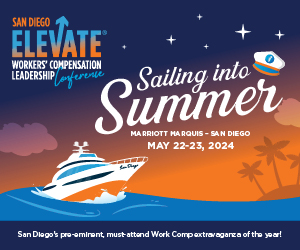On A Clear Day
Saturday, June 20, 2009 | 1
By Mullen & Filippi
June 21 is the summer solstice, when there is more daylight than any other day, allowing us more opportunity to clearly see the world around us. We can all agree that life is easier when things are clear, as is reflected in two recent decisions discussed in this edition of the Mullen & Filippi Bulletin.
Weiner v. Ralphs Co.. Based on the "clear and unambiguous" language that Labor Code section 139.5 is repealed effective Jan. 1, 2009, the WCAB held in this en banc decision that it no longer has jurisdiction to award vocational rehabilitation benefits, but retains jurisdiction only to enforce vocational rehabilitation benefit awards which were final before Jan. 1, 2009.
The board based its decision on the well established legal principle that the right to workers' compensation benefits is statutory, meaning that the right exists only so long as the statute granting the right remains in force. If the legislature repeals the statute before the right to the benefit is vested, the right disappears along with the statute. The board then explained that a statutory right does not become vested until final judgment. As a result, if the statute granting a benefit is repealed before there has been a final judgment finding that the injured worker is entitled to that benefit, the worker loses the right to claim that benefit. Since the right to vocational rehabilitation benefits for pre-2004 injuries was based on Section 139.5, and it was the "clear and unambiguous" intent of the legislature that Section 139.5 was repealed as of Jan. 1, 2009, the board no longer has jurisdiction to award vocational rehabilitation benefits. However, the board still has jurisdiction to enforce awards which have become final.
The effect of this decision is that, unless there has been an award of vocational rehabilitation benefits and the time to appeal the award has expired or all appeals have been exhausted, an applicant no longer has the ability to claim entitlement to vocational rehabilitation benefits.
Because Weiner is an en banc decision, it is binding in all pending workers' compensation cases. However, a few days before the Weiner decision was issued, the Second District Court of Appeal granted review of another case on the same issue, Beverly Hilton Hotel v. WCAB. In that case, which was decided in applicant's favor by the board in 2008, the court asked the parties to specifically address "the effect of the sunsetting of Labor Code section 139.5 on the applicant's right to vocational rehabilitation benefits." Oral argument in the case is set for August 4, 2009.
While the court of Appeal is not bound by the WCAB's decision in Weiner, the courts generally give great weight to the WCAB's interpretation of workers' compensation statutes. We hope that the court will agree with the WCAB that, in this case, the answer is clear.
Zaragoza v. Ibarra. In this case involving a laborer working on a home remodeling project for an unlicensed contractor, the Court of Appeal also found no entitlement to benefits based on clear statutory language, and long established law.
This Court of Appeal decision is the latest in a long line of cases confirming the rule that, pursuant to Labor Code section 3351(d) and 3352(h), an individual who is injured while working for a homeowner is only entitled to workers' compensation benefits after he has worked at least 52 hours within ninety days before the date of injury. In this case, a homeowner hired an unlicensed contractor to build an addition to her home. A laborer hired by the contractor to do demolition work was injured when he fell from a ladder on his second day on the job, and sued the homeowner for negligence. Relying on a convoluted interpretation of Sections 3351(d) and 3352(h), the homeowner's attorney argued that the laborer's exclusive remedy was workers' compensation benefits. The court disagreed, finding that "the law is well settled" that a worker employed to improve a residence in which the homeowner lives is only entitled to workers' compensation benefits if he has worked at least 52 hours as required by the statute. Fortunately for the homeowner, the court also found that the laborer caused his own injury, and the homeowner was also not liable for negligence.
Like Weiner, this case shows that clear statutes and consistent case law can lead to straightforward decisions that provide us with clear rules to follow in future cases.
Clearing Up EAMS. On June 2, 2009, the DWC Newsline reported that the Division of Workers' Compensation has implemented a cleanup plan to clean up a paper backlog of documents which have not yet been scanned to EAMS and provide training so that in the future forms are prepared properly to keep it clean.
According to the Newsline article, there was an existing backlog of paper files at the various district offices when EAMS was first implemented, which has been exacerbated by continued filing of forms which were not optical character recognition (OCR) compatible. A number of actions have been implemented to relieve this problem. Among other things, forms filed after Jan. 1, 2009 which are not OCR compliant are going to be returned to the filers with notices of deficiency explaining the mistakes. The article assures that returned documents will receive priority processing when re-filed. If necessary, additional training will be provided in the proper completion of forms.
As the article notes, it has been less than a year since EAMS was implemented. As with any new system, it takes time for the rules to be made clear to everyone. We applaud the DWC's efforts to develop a clear filing procedure which is streamlined and easy to use.
======
The Mullen & Filippi Bulletin is reprinted with the permission of the law firm from its website.
======




Comments
This comment is private.